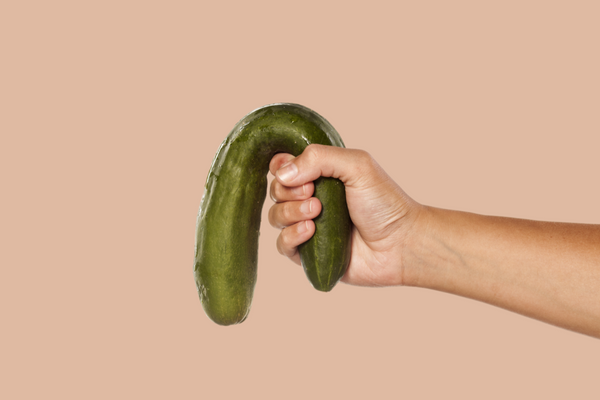What Are Split Ends?
Split ends, also known as trichoptilosis, happen when the protective outer layer of your hair shaft (the cuticle) is damaged, causing the fiber to fray and split apart. Different types of split ends exist—from the classic "Y" split to feather splits with multiple branches, and knot splits often seen in curly hair. No matter the type, split ends weaken your hair’s structure, leading to rough texture, lack of shine, and more breakage if not treated.
Understanding split ends helps you take proactive steps to stop the damage before it worsens. Think of it like maintaining your skin—you wouldn't wait for a major breakout to start caring for your face. The same philosophy applies to hair.
How Split Ends Affect Hair Health
Split ends aren't just a cosmetic issue. They can weaken strands, worsen frizz, dull the natural shine, and create the illusion of slower hair growth. If left untreated, split ends can climb up the hair shaft, resulting in even more significant breakage. Over time, this can make your hair appear thinner, limp, and difficult to manage.
According to Healthline, preventing split ends is crucial for maintaining hair health and appearance. It’s much easier—and less costly—to prevent damage than to repair it later.
Common Causes of Split Ends
Split ends can be caused by a range of everyday habits and environmental factors. Frequent heat styling tools like blow dryers, curling irons, and flat irons sap moisture from your strands, making them brittle. Chemical treatments such as coloring, perming, or relaxing break down the natural structure of your hair, weakening the cuticle layer. Even mechanical damage from brushing too aggressively or tying your hair too tightly can result in splits.
Environmental stressors play a bigger role than many realize. Sun exposure, harsh winds, and Manila’s air pollution gradually chip away at the hair’s protective barrier. And internally, poor nutrition—especially diets low in protein, iron, and healthy fats—affects the strength and resilience of hair.
A study from the International Journal of Trichology notes that nutritional deficiencies are a major internal cause of hair fiber weakness and splitting.
How to Prevent Split Ends
The foundation of split-end prevention is smart, daily hair care. Regular trims every 6–8 weeks remove damaged ends before they can worsen. When styling, always use a heat protectant spray to shield your hair from damage.
Being gentle with wet hair is critical. Use a wide-tooth comb to detangle and avoid tugging or pulling. Hydrating deeply at least once a week with rich conditioning masks ensures your strands stay flexible and less prone to snapping. Finally, shield your hair from environmental harm by wearing hats under strong sun and rinsing pollutants away after heavy outdoor exposure.
Choosing the right hair ties and sleeping on smooth fabrics like silk or satin can also protect your hair from unnecessary friction and strain overnight.
According to American Academy of Dermatology, adopting small protective habits adds up to long-term hair health.
Seasonal Hair Care Tips for Filipinos
The Philippines’ two main seasons—the dry and rainy seasons—both challenge hair health.
During the rainy season, moisture in the air can lead to frizz, scalp fungal issues, and limp hair. It’s essential to focus on lightweight hydration and scalp-cleansing products that don’t weigh your hair down. Antifungal scalp tonics can also be helpful.
The dry season brings intense sun exposure, risking UV damage and hair dehydration. Switching to more intensive conditioning routines, using products with built-in UV protection, and wearing head coverings outdoors become crucial for maintaining healthy hair.
Best Split End Prevention Tips for Men and Women
Hair care doesn’t need to be complicated. For men, sticking to light moisturizing shampoos, maintaining regular trims, and avoiding heavy, alcohol-based gels or waxes are easy first steps. For women, being mindful of tight ponytails, minimizing the use of chemical treatments, and favoring loose protective styles like low buns or braids can significantly reduce stress on the strands.
Everyone benefits from prioritizing hydration, gentle handling, and smart environmental protection regardless of hair length or style.
Natural Remedies to Nourish Hair
Nature offers some of the best solutions for split-end prevention.
Coconut oil is a staple in Filipino households for a reason. Warming a small amount of virgin coconut oil and applying it from mid-lengths to ends can deeply moisturize the hair, making it less prone to splitting. Leave it on for at least 30 minutes, or overnight if possible, before rinsing with a mild shampoo.
Aloe vera hair masks are another natural remedy worth trying. Mix fresh aloe gel with a small amount of olive oil and apply it evenly to your hair. This blend soothes the scalp, hydrates dry strands, and restores shine.
Research published in Molecules Journal highlights aloe vera’s antioxidant and moisturizing properties, making it a valuable addition to hair care routines.
Lifestyle-Based Split End Advice
Your daily environment and routine greatly influence your hair’s health.
For office professionals, daily exposure to air-conditioned environments can dry out hair. Keep a travel-sized hydrating mist on hand to refresh your hair during the day.
Active individuals, including gym-goers and athletes, should rinse their hair after workouts to remove sweat and salt buildup. Using lightweight leave-in conditioners can help maintain moisture balance without making the hair greasy.
Outdoor workers, including delivery riders and construction workers, face extreme sun and pollution. It's crucial to protect the hair with hats, UV sprays, and gentle cleansing rituals at the end of each day to maintain a healthy scalp and minimize damage.
Can Split Ends Be Repaired?
Many products claim to "repair" split ends, but the truth is, once a strand has split, it cannot be fully repaired. Treatments like serums and protein masks can temporarily seal the cuticle, giving the appearance of healthier hair, but the only real cure is trimming the damaged ends.
That said, investing in split-end prevention and regularly nourishing your hair will dramatically reduce the frequency and severity of splits over time.
When to See a Hair Specialist
If you experience persistent breakage, rapid hair thinning, or scalp irritation, it’s important to consult a professional. Early intervention can prevent long-term damage. Our consultation service offers expert help tailored for Filipino hair concerns, helping you design a care plan that fits your lifestyle and goals.
Healthy Hair is for Everyone
Split ends are a common and manageable part of hair care. With consistent habits—regular trims, moisturizing treatments, sun protection, and mindful styling—you can keep your hair looking its best.
Whether you're maintaining a sleek bob, luscious curls, a sporty crew cut, or textured waves, healthy hair is attainable for everyone with the right care.
Your hair deserves as much attention as your skin or fitness routine. Start investing in it today, and your future self will thank you.
For more expert guides, Filipino-specific hair care tips, and trusted product recommendations, visit andyou.ph and start your healthier hair journey.















